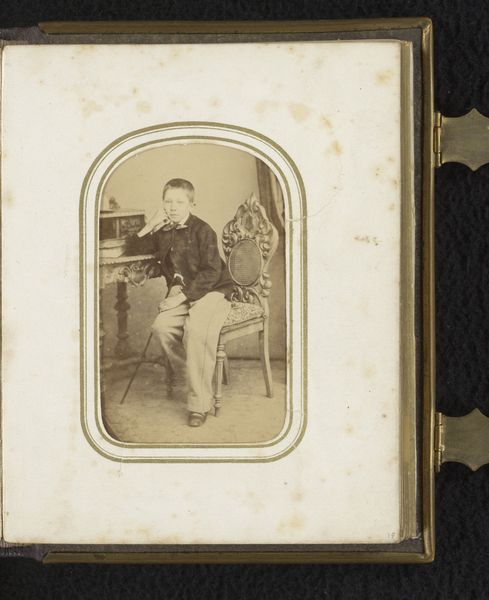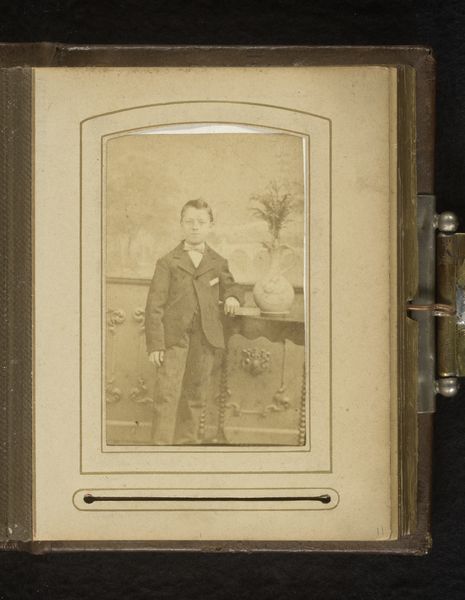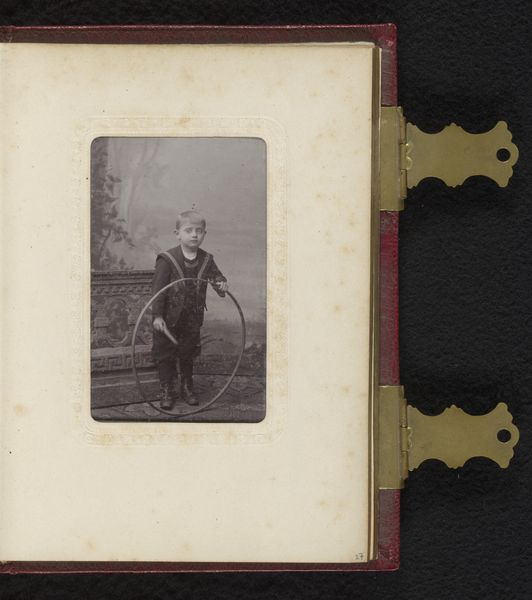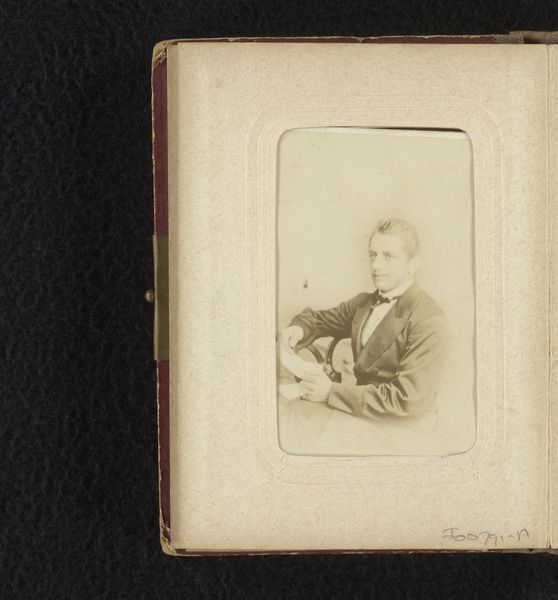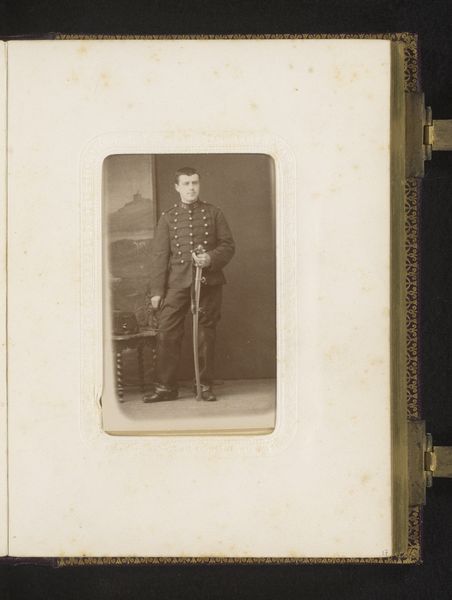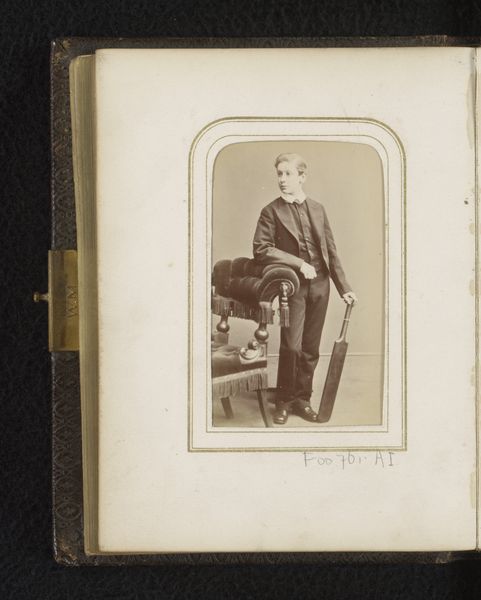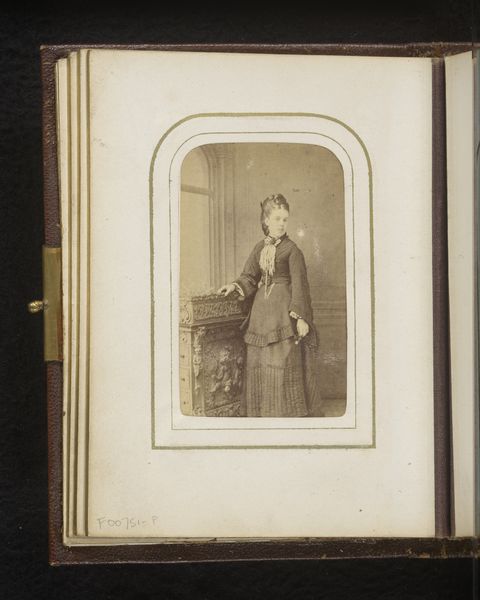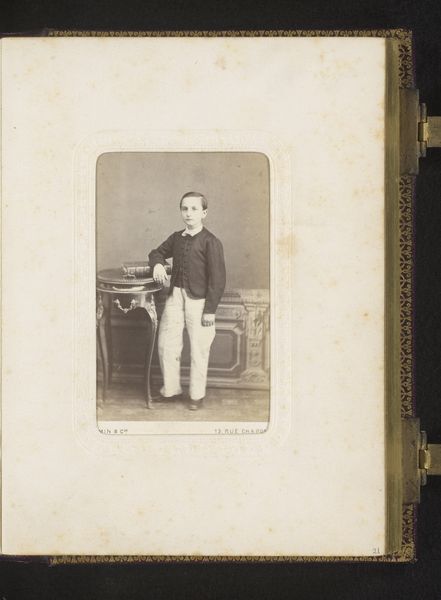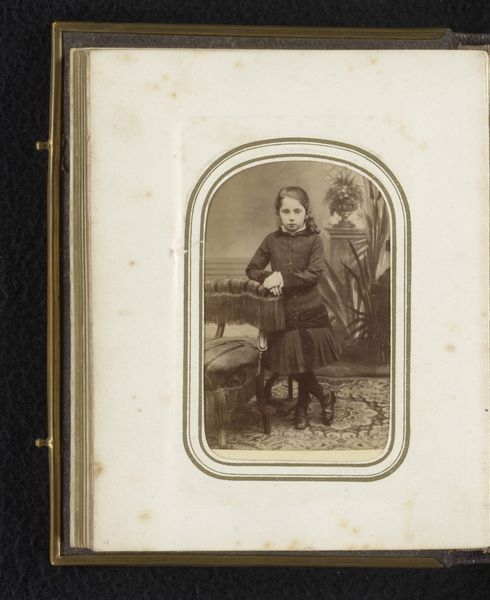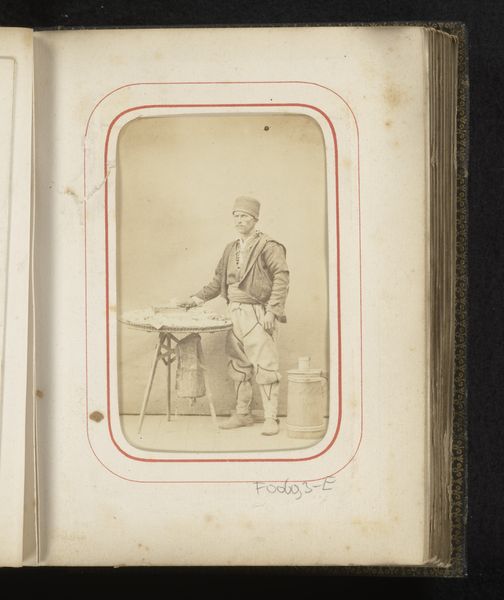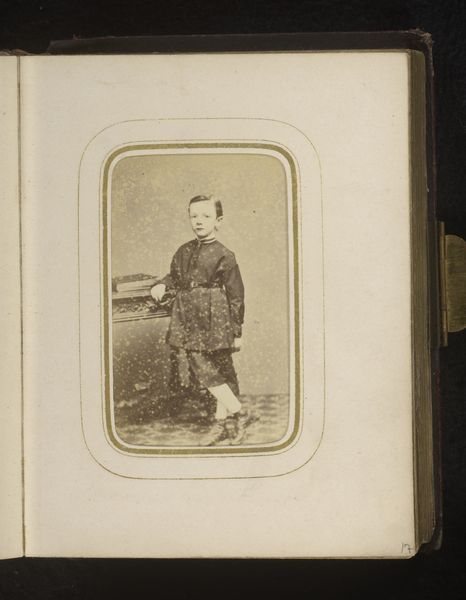
Portret van een jongen met hoepel, staand bij een balustrade Possibly 1888 - 1914
0:00
0:00
photography
#
portrait
#
photography
#
coloured pencil
#
genre-painting
#
realism
Dimensions: height 84 mm, width 52 mm
Copyright: Rijks Museum: Open Domain
Curator: Ah, here we have an intriguing piece from Jules Louis Faassen, likely taken between 1888 and 1914. It’s entitled “Portret van een jongen met hoepel, staand bij een balustrade”— "Portrait of a boy with a hoop, standing by a balustrade." It’s a photograph, sepia-toned and presented as part of what appears to be an old photograph album. Editor: My first impression? A wistful sort of stillness. He's frozen in time, this little fellow with his hoop. Almost like he's caught between playing and posing. It makes me think of long summer afternoons and the gentle weight of growing up. Curator: The materiality speaks volumes. We have a direct trace of the photographic process itself, visible ageing and chemical shifts. These portraits would often be carefully composed; studio settings or, in this case, a semi-naturalistic backdrop of the garden wall creating the setting for what became lasting middle-class memorabilia. This type of photography also raises interesting questions about class, labour, and access to new technologies. Editor: Yes! There's such formality to it. He’s even in his Sunday best for the shot. The hoop—a child's toy, pure and simple—is there, yet he seems so poised, like a miniature adult already aware of the performance. It makes you wonder about his actual day to day, outside of what his parents wanted recorded for posterity. Curator: Precisely. That hoop is industrially produced—most likely machine-made out of either wood or metal, thus making it available on a wider scale to those with some disposable income. The boy himself could be considered the product of certain social and economic forces within the period of expanding capitalism and rising class mobility of this historical moment. It presents a rather neat collision of manufactured childhood innocence. Editor: What strikes me now, observing a level of visual imperfection, is the power of the photographer. Faassen shapes our perception not just through posing but also through what feels like a touch of painterly control over light and shadow. Perhaps he saw a melancholy narrative playing out, a fleeting glimpse that resonated and captured for good. Curator: Exactly. I see Faassen less as a singular “artist” genius and more as a craftsperson whose artistry comes out of manipulating industrial resources within his given societal conditions. Still, it raises some really valid ideas to explore deeper into issues of representation, technology and socio-economic development. Editor: And it’s right there—the potential for reflection and to delve deep inside! The photograph acts like a doorway. I wonder if the boy had any inkling he would be contemplated this intently over a century later? It makes you think about our ephemeral yet oddly enduring place in time.
Comments
No comments
Be the first to comment and join the conversation on the ultimate creative platform.

